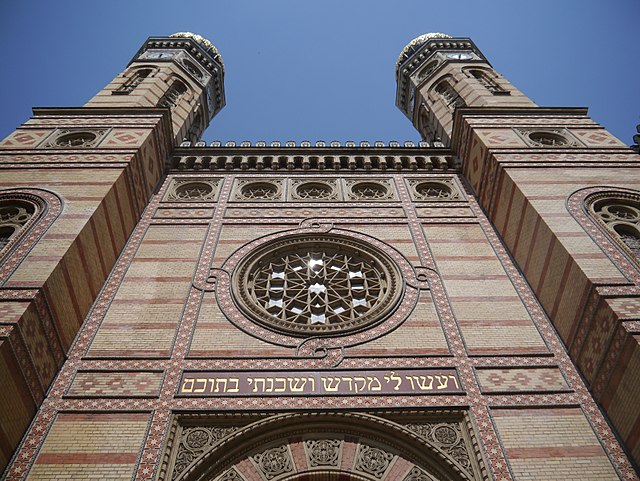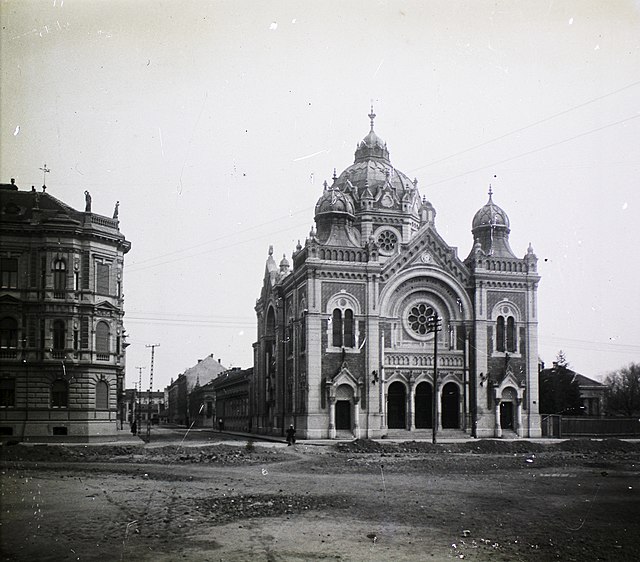The Fabric Synagogue is a Neolog synagogue in the Fabric district of Timișoara. The synagogue was called the New Synagogue because it replaced the old synagogue on Timocului Street. It was built between 1897 and 1899 in an eclectic style, with neo-Moorish, Gothic and Italian neo-Renaissance elements. The building was classified in the national protection lists as a historical monument under the classification code TM-II-m-B-06128, being located in the historical protection area named Fabric (II) urban ensemble.
Fabric Synagogue
Fabric Synagogue in 1905
Neologs are one of the two large communal organizations among Hungarian Jewry. Socially, the liberal and modernist Neologs had been more inclined toward integration into Hungarian society since the Era of Emancipation in the 19th century. This was their main feature, and they were largely the representative body of urban, assimilated middle- and upper-class Jews. Religiously, the Neolog rabbinate was influenced primarily by Zecharias Frankel's Positive-Historical School, from which Conservative Judaism evolved as well, although the formal rabbinical leadership had little sway over the largely assimilationist communal establishment and congregants. Their rift with the traditionalist and conservative Orthodox Jews was institutionalized following the 1868–1869 Hungarian Jewish Congress, and they became a de facto separate denomination. The Neologs remained organizationally independent in those territories ceded under the terms of the 1920 Treaty of Trianon, and are still the largest group among Hungary's Jews.

The Neolog Dohány Street Synagogue in Budapest, the largest synagogue in Europe.
Rabbi Leopold Löw.
The hall of the Szeged Synagogue.
Budapest University of Jewish Studies, 1902.






